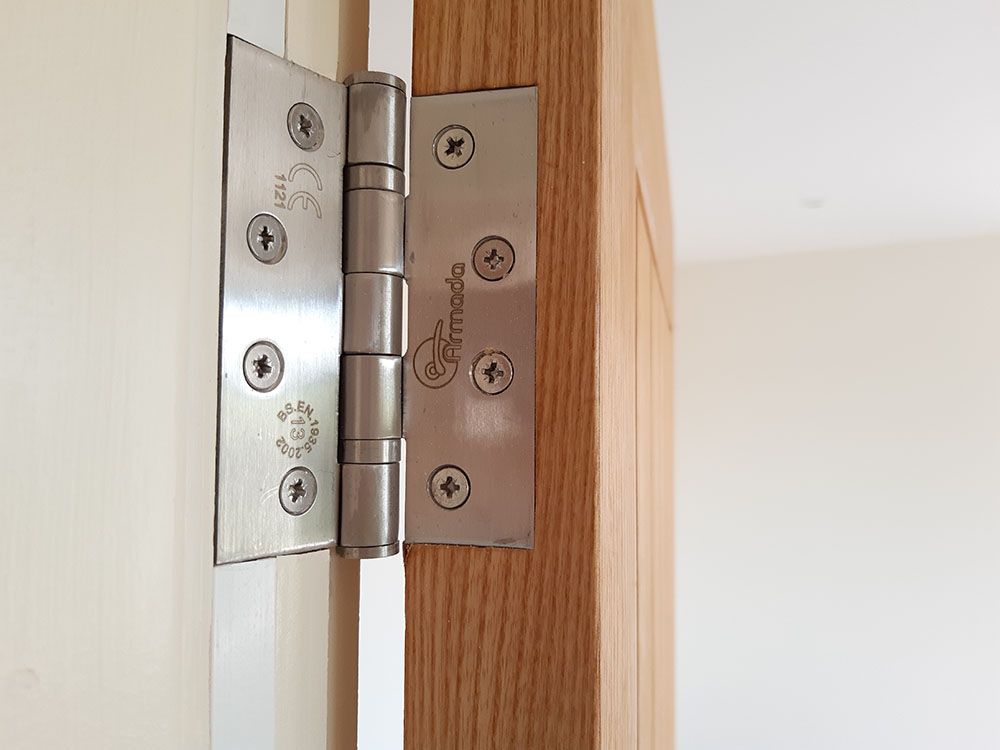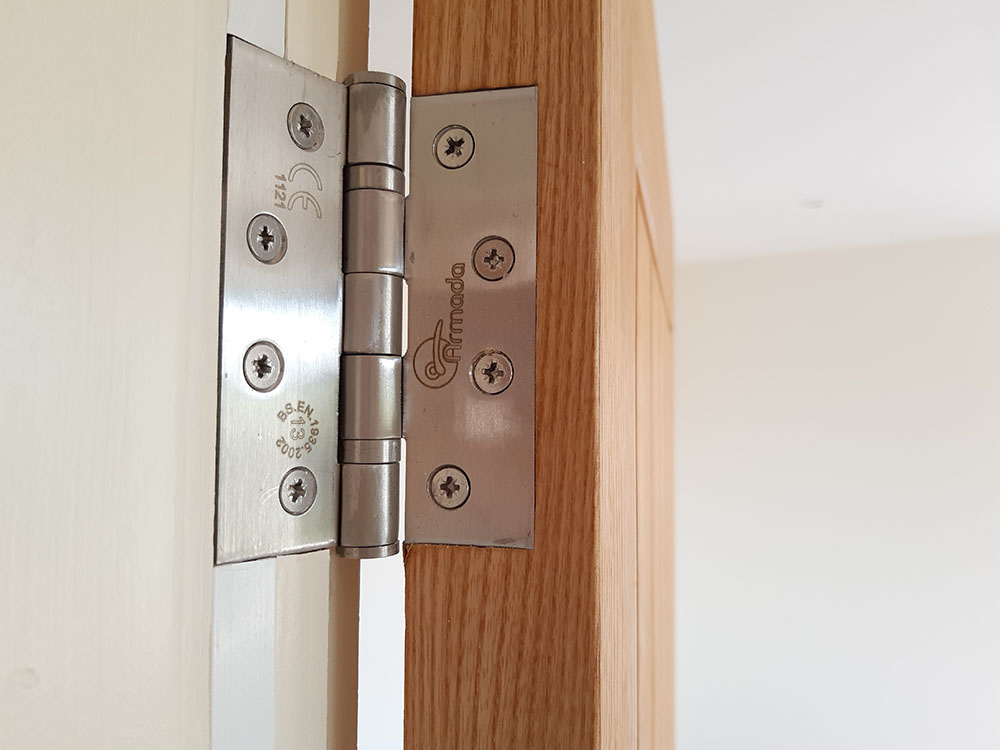Should I fit intumescent pads behind my fire door hinges?

Should I fit intumescent pads behind my fire door hinges?
This common question can often cause confusion!
Generally, our customers are dealing with either FD30 or FD60 doors (30 minute fire resistance or 60 minute fire resistance). FD30 doors will normally be 44mm thick, and FD60 doors will be 54mm thick.
You need to make sure firstly that you are using a suitable fire tested hinge (more about that on our separate post ‘What should I consider when fitting hinges to fire doors’) with CE and EN 1935 markings stamped on it.
It’s important to know the fire test data for the hinge because generally when they are put through their fire test they will have been fitted with an intumescent pad behind both hinge leaves (on the door side and the frame side).
For example, our HFR014 Ball bearing butt hinge CE Certificate of Approval states that, for FD30 doors; All hinges must be bedded onto a 1mm thickness of mono ammonium phosphate intumescent material behind both blades. For FD60 applications; All hinges must be bedded onto a 2mm thickness of mono ammonium phosphate intumescent material behind both blades.
These intumescent hinge pads can be purchased separately (our code HAF014), ready cut to size to suit the hinge blade. To achieve the 2mm thickness required for FD60, 2no 1mm pads can be stacked on top of each other.
Simple, right? Well no, not really…!
The other important thing to consider is the fire test assessment for the door that you are using.
In many cases (but not all), the fire test assessment for the door states that for standard sized FD30 doors, intumescent hinge pads are not required.
For instance the BM Trada Field of Application Report for the Strebord 44mm FD30 door core states that hinge pads are not required for doors of height 2670mm and under. Doors of height 2671mm and over need 1mm intumescent pads under both hinge leaves.
Likewise, BM Trada’s Field of Application Report for the Halspan Optima 30 door core, simply says; hinge intumescent protection not required.
And a third example is Jeld-Wen’s Tubeboard FD30 door core, where the Certifire Certificate of Approval also says; none required.
When we get to FD60 door tests however, we start to see fire test assessments requiring intumescent behind the hinge pads, as you would imagine for a door that has to resist fire for an extra 30 minutes.
IFC’s Field of Application Report for the Optima 60 door core states ‘hinge blades must be bedded on graphite based or non-pressure forming intumescent material at least 1mm thick.’
Jeld-Wen’s Certifire Certificate of Approval for their FD60 Flush Timber Door Assemblies says ‘1mm Interdens or Graphite intumescent sheet material under all hinge blades’
So what do you do when the hinge fire test and the door fire assessment give different requirements? Well, the door test evidence takes precedence over the hinge’s test evidence – as long as the hinge specification falls within the parameters specified in the door fire fire assessment (size, material etc).
Therefore if you are fitting, for example, approved hinges to a Strebord 44mm FD30 door core, (assuming the door is less than 2671mm high and has a timber frame) you don’t need to fit hinge pads.
However, if you are not sure which door core you are dealing with, you should go by the hinge test data and fit them! As you can see from the above examples, generally the hinge intumescent requirements are in excess of the door requirements so this is the safe option.
Note that all of the scenarios that we discuss are assuming that standard timber frames are being used. If you have frames such as pvc encapsulated, metal etc., advice may well differ; please check the detail of the relevant fire test reports, or get in touch with us for further advice.
Review of this page due December 2022. Please note that advice given is advisory only and to the best of our knowledge at time of writing. We cannot be held responsible for loss or damage incurred as a result of actions taken based on this article.


